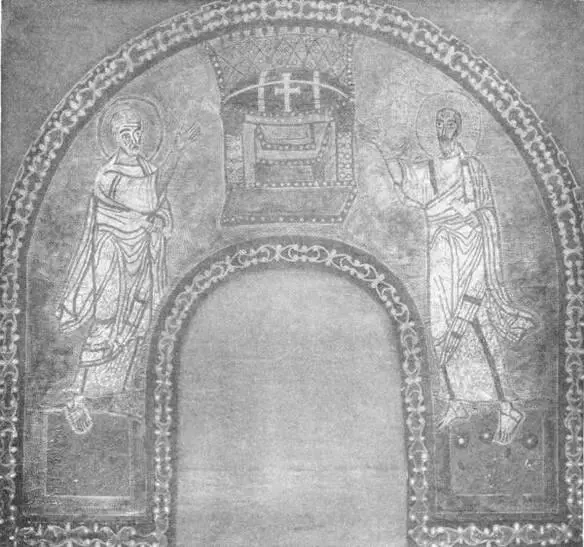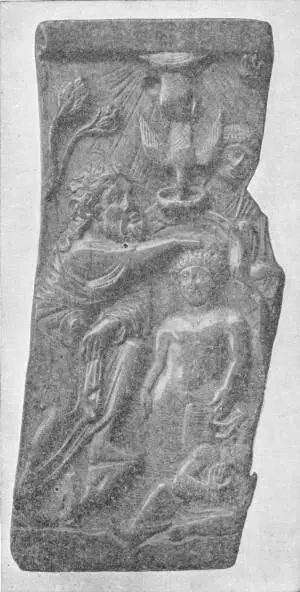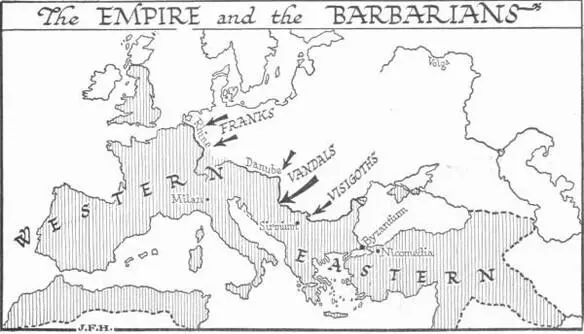Herbert Wells - A Short History of the World
Здесь есть возможность читать онлайн «Herbert Wells - A Short History of the World» весь текст электронной книги совершенно бесплатно (целиком полную версию без сокращений). В некоторых случаях можно слушать аудио, скачать через торрент в формате fb2 и присутствует краткое содержание. Год выпуска: 2011, Жанр: История, на английском языке. Описание произведения, (предисловие) а так же отзывы посетителей доступны на портале библиотеки ЛибКат.
- Название:A Short History of the World
- Автор:
- Жанр:
- Год:2011
- ISBN:нет данных
- Рейтинг книги:4 / 5. Голосов: 1
-
Избранное:Добавить в избранное
- Отзывы:
-
Ваша оценка:
- 80
- 1
- 2
- 3
- 4
- 5
A Short History of the World: краткое содержание, описание и аннотация
Предлагаем к чтению аннотацию, описание, краткое содержание или предисловие (зависит от того, что написал сам автор книги «A Short History of the World»). Если вы не нашли необходимую информацию о книге — напишите в комментариях, мы постараемся отыскать её.
A Short History of the World — читать онлайн бесплатно полную книгу (весь текст) целиком
Ниже представлен текст книги, разбитый по страницам. Система сохранения места последней прочитанной страницы, позволяет с удобством читать онлайн бесплатно книгу «A Short History of the World», без необходимости каждый раз заново искать на чём Вы остановились. Поставьте закладку, и сможете в любой момент перейти на страницу, на которой закончили чтение.
Интервал:
Закладка:

MOSAIC OF SS. PETER AND PAUL POINTING TO A THRONE, ON GOLD BACKGROUND
From the Ninth Century original, in the Church of Sta. Prassede, Rome
(In the Victoria and Albert Museum)
St. Paul familiarized his disciples with the idea that Jesus, like Osiris, was a god who died to rise again and give men immortality. And presently the spreading Christian community was greatly torn by complicated theological disputes about the relationship of this God Jesus to God the Father of Mankind. The Arians taught that Jesus was divine, but distant from and inferior to the Father. The Sabellians taught that Jesus was merely an aspect of the Father, and that God was Jesus and Father at the same time just as a man may be a father and an artificer at the same time; and the Trinitarians taught a more subtle doctrine that God was both one and three, Father, Son and Holy Spirit. For a time it seemed that Arianism would prevail over its rivals, and then after disputes, violence and wars, the Trinitarian formula became the accepted formula of all Christendom. It may be found in its completest expression in the Athanasian Creed.
We offer no comment on these controversies here. They do not sway history as the personal teaching of Jesus sways history. The personal teaching of Jesus does seem to mark a new phase in the moral and spiritual life of our race. Its insistence upon the universal Fatherhood of God and the implicit brotherhood of all men, its insistence upon the sacredness of every human personality as a living temple of God, was to have the profoundest effect upon all the subsequent social and political life of mankind. With Christianity, with the spreading teachings of Jesus, a new respect appears in the world for man as man. It may be true, as hostile critics of Christianity have urged, that St.. Paul preached obedience to slaves, but it is equally true that the whole spirit of the teachings of Jesus preserved in the gospels was against the subjugation of man by man. And still more distinctly was Christianity opposed to such outrages upon human dignity as the gladiatorial combats in the arena.

THE BAPTISM OF CHRIST
(Sixth Century Ivory Panel in the British Museum)
Throughout the first two centuries after Christ, the Christian religion spread throughout the Roman Empire, weaving together an ever-growing multitude of converts into a new community of ideas and will. The attitude of the emperors varied between hostility and toleration. There were attempts to suppress this new faith in both the second and third centuries; and finally in 303 and the following years a great persecution under the Emperor Diocletian. The considerable accumulations of Church property were seized, all bibles and religious writings were confiscated and destroyed, Christians were put out of the protection of the law and many executed. The destruction of the books is particularly notable. It shows how the power of the written word in holding together the new faith was appreciated by the authorities. These “book religions,” Christianity and Judaism, were religions that educated. Their continued existence depended very largely on people being able to read and understand their doctrinal ideas. The older religions had made no such appeal to the personal intelligence. In the ages of barbaric confusion that were now at hand in western Europe it was the Christian church that was mainly instrumental in preserving the tradition of learning.
The persecution of Diocletian failed completely to suppress the growing Christian community. In many provinces it was ineffective because the bulk of the population and many of the officials were Christian. In 317 an edict of toleration was issued by the associated Emperor Galerius, and in 324 Constantine the Great, a friend and on his deathbed a baptized convert to Christianity, became sole ruler of the Roman world. He abandoned all divine pretensions and put Christian symbols on the shields and banners of his troops.
In a few years Christianity was securely established as the official religion of the empire. The competing religions disappeared or were absorbed with extraordinary celerity, and in 300 Theodosius the Great caused the great statue of Jupiter Serapis at Alexandria to be destroyed. From the outset of the fifth century onward the only priests or temples in the Roman Empire were Christian priests and temples.
XXXIX
THE BARBARIANS BREAK THE EMPIRE INTO EAST AND WEST
THROUGHOUT the third century the Roman Empire, decaying socially and disintegrating morally, faced the barbarians. The emperors of this period were fighting military autocrats, and the capital of the empire shifted with the necessities of their military policy. Now the imperial headquarters would be at Milan in north Italy, now in what is now Serbia at Sirmium or Nish, now in Nicomedia in Asia Minor. Rome halfway down Italy was too far from the centre of interest to be a convenient imperial seat. It was a declining city. Over most of the empire peace still prevailed and men went about without arms. The armies continued to be the sole repositories of power; the emperors, dependent on their legions, became more and more autocratic to the rest of the empire and their state more and more like that of the Persian and other oriental monarchs. Diocletian assumed a royal diadem and oriental robes.
All along the imperial frontier, which ran roughly along the Rhine and Danube, enemies were now pressing. The Franks and other German tribes had come up to the Rhine. In north Hungary were the Vandals; in what was once Dacia and is now Roumania, the Visigoths or West Goths. Behind these in south Russia were the East Goths or Ostrogoths, and beyond these again in the Volga region the Alans. But now Mongolian peoples were forcing their way towards Europe. The Huns were already exacting tribute from the Alans and Ostrogoths and pushing them to the west.
In Asia the Roman frontiers were crumpling back under the push of a renascent Persia. This new Persia, the Persia of the Sassenid kings, was to be a vigorous and on the whole a successful rival of the Roman Empire in Asia for the next three centuries.
A glance at the map of Europe will show the reader the peculiar weakness of the empire. The river Danube comes down to within a couple of hundred miles of the Adriatic Sea in the region of what is now Bosnia and Serbia. It makes a square re-entrant angle there. The Romans never kept their sea communications in good order, and this two hundred mile strip of land was their line of communication between the western Latin-speaking part of the empire and the eastern Greek-speaking portion. Against this square angle of the Danube the barbarian pressure was greatest. When they broke through there it was inevitable that the empire should fall into two parts.

A more vigorous empire might have thrust forward and reconquered Dacia, but the Roman Empire lacked any such vigour. Constantine the Great was certainly a monarch of great devotion and intelligence. He beat back a raid of the Goths from just these vital Balkan regions, but he had no force to carry the frontier across the Danube. He was too pre-occupied with the internal weaknesses of the empire. He brought the solidarity and moral force of Christianity to revive the spirit of the declining empire, and he decided to create a new permanent capital at Byzantium upon the Hellespont. This new-made Byzantium, which was re-christened Constantinople in his honour, was still building when he died. Towards the end of his reign occurred a remarkable transaction. The Vandals, being pressed by the Goths, asked to be received into the Roman Empire. They were assigned lands in Pannonia, which is now that part of Hungary west of the Danube, and their fighting men became nominally legionaries. But these new legionaries remained under their own chiefs. Rome failed to digest them.
Читать дальшеИнтервал:
Закладка:
Похожие книги на «A Short History of the World»
Представляем Вашему вниманию похожие книги на «A Short History of the World» списком для выбора. Мы отобрали схожую по названию и смыслу литературу в надежде предоставить читателям больше вариантов отыскать новые, интересные, ещё непрочитанные произведения.
Обсуждение, отзывы о книге «A Short History of the World» и просто собственные мнения читателей. Оставьте ваши комментарии, напишите, что Вы думаете о произведении, его смысле или главных героях. Укажите что конкретно понравилось, а что нет, и почему Вы так считаете.








